Gameplay
Compared to most console racing games of its time, F-1 Hero was much more difficult. The circuits were accurately depicted as having both sharp and wide turns, thus requiring players to slow down to certain speeds for corners, instead of most arcade-style games, which allowed players to unrealistically take turns flat-out. Gear shifting was also required for three of the cars (and notably for 8 of the 9 levels of the game), and some courses required dozens of gear changes per lap. Tire wear increased as the races went on, and players would be required to pit for tires at least once during each race to remain competitive.
When multiple cars were on the track, the game featured no direct interaction between vehicles. All of the competitors' machines behaved in a ghost-like manner, and could be driven through and occupy the same space as others. Cars were unable to spin others out, and could not directly impede their progress.
Nearly every screen in the entire game featured a short-looped, repeating soundtrack. Unlike most racing games, however, there was no music played while actually driving.
F-1 Hero featured a 16-race Formula One schedule resembling that of 1988. Each circuit featured a pit area represented by a pylon. On most circuits, the pits were located just prior to the start/finish line. In France, England, Spain, and Australia, the pits were located just after the start/finish line.
Four different machines were featured in the game. Each had a unique pitch, and slightly varying top speeds. The Chevy was the dominant machine in the game, despite not being a Formula One car. In reality, it was used in the CART series. Andretti, in fact, drove one in the CART series from 1989–1991, and the cover art on the game box accurately displays Andretti's 1989 Lola Chevrolet.
Grand Prix mode
The Grand Prix mode of F-1 Hero featured nine levels of competition. Each had an increasing number of rounds, an increased level of difficulty, and was led by a featured driver. For each level, the player was provided a certain car. Players could save and continue games by use of a password.
Qualifying
Upon entering the Grand Prix mode, the player registers a name and begins at level 1. At the onset of each race, the player is first shown a map of the circuit. On the next screen, the player is shown the results of qualifying thus far. All five computer opponents have completed their time trial run. The top four comprise the tentative starting grid. The slowest computer driver (fifth fastest) does not qualify. The objective of qualifying is for the player to qualify amongst the top four, and "bump" into the starting grid.
Qualifying consists of five timed laps alone on the track. From a standing start, the player has five laps to record the best single lap time possible. Tire wear influences the speeds, and pitting for tires is allowed on any lap. However, elapsed seconds in the pit area are included in the respective lap time. The fastest single lap is recorded and if it is among the four fastest qualifiers, the player qualifies for the race. If the player does not qualify, they must sit out the race, and instead watch it through the perspective of the featured driver. Hitting the "select" button during qualifying aborts the session. If the player had already registered a lap fast enough to qualify for the race, it is unnecessary to run all five laps.
Race
The race begins from a standing start and runs a specific number of laps, depending upon the length of the circuit. The top half of the screen features a map of the circuit, and the position of all four cars represented by icons. Tire wear influences lap times, and a pit stop for tires near the halfway point is required to remain competitive. Players are required to compete, and are not allowed to abort the race. If a car is lapped during the race, the player will only be scored for laps completed. Spinning out during the race is possible, but no incident ever causes a car to completely drop out of the race. Fuel is also not a factor in the game.
Championship points
At the conclusion of each race, points are awarded to the four finishers (5-3-2-1). At the end of the level, a champion is declared. In order to advance to the next level, the player is required to score the most points and be the champion of the level. If the player does not score the most points in the level, the player may use the password to return to the first race of the level and try again. For scoring the most points in Level 9, the player is declared the World Champion, wins the game overall, and a special screen is displayed. If the player did not win the championship, the game is over.
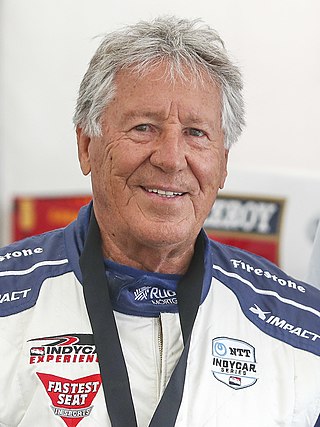
Mario Gabriele Andretti is an American former racing driver. He is widely regarded among the most successful drivers in the history of motorsports. Andretti is one of only three drivers to have won races in Formula One, IndyCar, the World Sportscar Championship, and NASCAR. He has also won races in midget car racing and sprint car racing.

In motorsports, a pit stop is a pause for refuelling, new tyres, repairs, mechanical adjustments, a driver change, as a penalty, or any combination of the above. These stops occur in an area called the pits, most commonly accessed via a pit lane which runs parallel to the start/finish straightaway of the track and is connected to it at each end. Along this lane is a row of garages outside which the work is done in a pit box. Pit stop work is carried out by the pit crew of up to twenty mechanics, depending on the series regulations, while the driver often waits in the vehicle.

The Grand Prix of Long Beach is an IndyCar Series race held on a street circuit in downtown Long Beach, California. It was the premier race on the CART/Champ Car World Series calendar from 1996 to 2008, and the 2008 race was the final Champ Car series race prior to the formal unification and end of the open-wheel "split" between CART and IRL. Since 2009, the race has been part of the unified IndyCar Series. The race is typically held in April. It is one of the longest continuously running events in IndyCar racing and is considered one of the most prestigious events on the circuit.
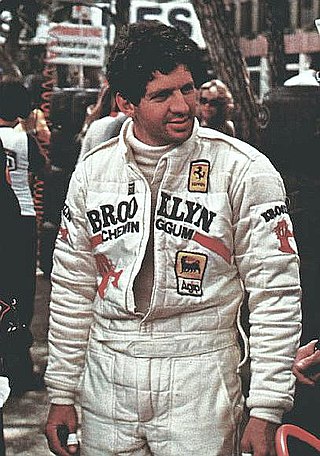
The 1979 Formula One season was the 33rd season of FIA Formula One motor racing. It featured the 1979 World Championship of F1 Drivers and the 1979 International Cup for F1 Constructors which were contested concurrently over a fifteen-round series which commenced on 21 January 1979, and ended on 7 October. The season also included three non-championship Formula One races.

The 1978 Formula One season was the 32nd season of FIA Formula One motor racing. It featured the 1978 World Championship of F1 Drivers and the International Cup for F1 Constructors, contested concurrently over a sixteen race series which commenced on 15 January and ended on 8 October. The season also included the non-championship BRDC International Trophy.

The 1977 Formula One season was the 31st season of FIA Formula One motor racing. It featured the 28th World Championship of Drivers and the 20th International Cup for Formula 1 Constructors. The season commenced on 9 January 1977 and ended on 23 October after seventeen races, making it the longest Formula One season in the sport's history at the time. The season also included a single non-championship race for Formula One cars, the 1977 Race of Champions.

The 1976 Formula One season was the 30th season of FIA Formula One motor racing. It featured the 1976 World Championship of Drivers and the 1976 International Cup for Formula 1 Manufacturers. The two titles were contested over a sixteen race series which commenced on 25 January and ended on 24 October. Two non-championship races were also held during the 1976 season. In an extraordinarily political and dramatic season, the Drivers' Championship went to McLaren driver James Hunt by one point from Ferrari's defending champion Niki Lauda, although Ferrari took the Manufacturers' trophy.
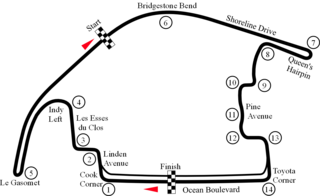
The 1980 United States Grand Prix West was a Formula One motor race held on March 30, 1980, at Long Beach, California. It was the fourth round of the 1980 Formula One season. The race was the fifth United States Grand Prix West and the sixth street race to be held at Long Beach. The race was held over 80 laps of the 3.251-kilometre circuit for a total race distance of 260 kilometres.
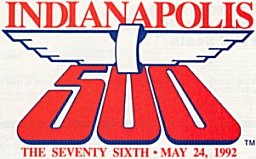
The 76th Indianapolis 500 was held at the Indianapolis Motor Speedway in Speedway, Indiana, on Sunday, May 24, 1992. The race is famous for the fierce battle in the closing laps, as race winner Al Unser Jr. held off second place Scott Goodyear for the victory by 0.043 seconds, the closest finish in Indy history. Unser Jr. became the first second-generation driver to win the Indy 500, following in the footsteps of his father Al Unser Sr. He also became the third member of the famous Unser family to win the race.

IndyCar Racing is a racing video game by Papyrus Design Group released in 1993. Papyrus, consisting of David Kaemmer and Omar Khudari, previously developed Indianapolis 500: The Simulation, released in 1989.

Al Unser Jr.'s Turbo Racing is a racing video game for the Nintendo Entertainment System console released in 1990. It is an adaptation of the 1989 Japanese-market Famicom game World Grand Prix - Pole to Finish, with the most notable changes being the addition of Unser as an in-game coach, the number of laps, sound and interface design. Therefore, the game remains based on the Formula 1 World Championship, despite Unser having never competed in it. This game features a season mode and two time trial modes. In season mode the player uses either Al Unser Jr. or a make-their-own-driver.

The Andretti Curse, sometimes referred to as Andretti Luck, is a sports-related curse in a string of bad luck the Andretti racing family has experienced in their efforts to win the Indianapolis 500 at Indianapolis Motor Speedway.

The 1995 PPG Indy Car World Series season was the seventeenth in the Championship Auto Racing Teams (CART) era of U.S. American open-wheel car racing. It consisted of 17 races, beginning in Miami, Florida on March 5 and concluding in Monterey, California on September 10. The PPG Indy Car World Series Drivers' Champion and Indianapolis 500 winner was Jacques Villeneuve. Rookie of the Year was Gil de Ferran. This was the last season before the formation of the Indy Racing League by Indianapolis Motor Speedway owner, Tony George, and the last time the United States Auto Club-sanctioned Indianapolis 500 would appear in the Series.

The 1994 PPG Indy Car World Series season was the 16th national championship season of American open wheel racing sanctioned by CART under the name "IndyCar". The season consisted of 16 races. Al Unser Jr. was the national champion, his second CART title, and the rookie of the year was Jacques Villeneuve. The 1994 Indianapolis 500 was sanctioned by USAC, but counted towards the CART points championship. Al Unser Jr. won the Indy 500 from the pole position, his second career victory in that event.
The following is a glossary of terminology used in motorsport, along with explanations of their meanings.

The 2001 Motorola 220 was a Championship Auto Racing Teams (CART) motor race held on August 19, 2001, at the Road America circuit in Elkhart Lake, Wisconsin. It was the 14th race of the 2001 CART season, and the 19th annual edition of the event. Chip Ganassi Racing's Bruno Junqueira who started from tenth position won the 45-lap race. Michael Andretti finished second for Team Green and Fernández Racing driver Adrian Fernández was third.
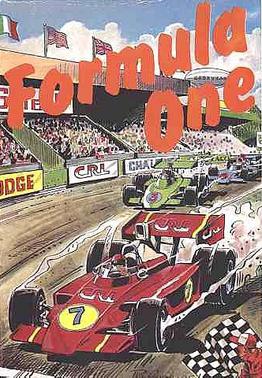
Formula One is a Formula One racing management video game published in 1985 by CRL Group PLC. It was developed by G.B. Munday and B.P. Wheelhouse for the ZX Spectrum, and converted to Amstrad CPC by Richard Taylor.

The 2013 IZOD IndyCar Series was the 18th season of the IndyCar Series and the 102nd season of American open wheel racing. Its premier event was the 97th Indianapolis 500 held on Sunday, May 26. The 2013 season was the second to feature the Dallara DW12 chassis. Ryan Hunter-Reay entered the season as the defending drivers' champion. Chevrolet entered as the defending Manufacturers' Cup champion.

The 2014 Verizon IndyCar Series was the 19th season of the IndyCar Series and the 103rd season of American open wheel racing. Its premier event was the 98th Indianapolis 500, held on Sunday, May 25. Scott Dixon entered the season as the defending IndyCar Champion, while Chevrolet entered as the reigning Manufacturers' champion.

The 2000 Rio 200 was a Championship Auto Racing Teams (CART) auto race held at the trapezoid-shaped Autódromo de Jacarepaguá, Rio de Janeiro, Brazil on April 30, 2000. It was the third race of the 2000 CART season, the fifth running of the event, and the first round of the year to be held outside of the United States. The 108-lap race was won by Patrick Racing driver Adrián Fernández after he started from sixteenth. Jimmy Vasser of Chip Ganassi Racing finished second with Team Green's Paul Tracy third.


















